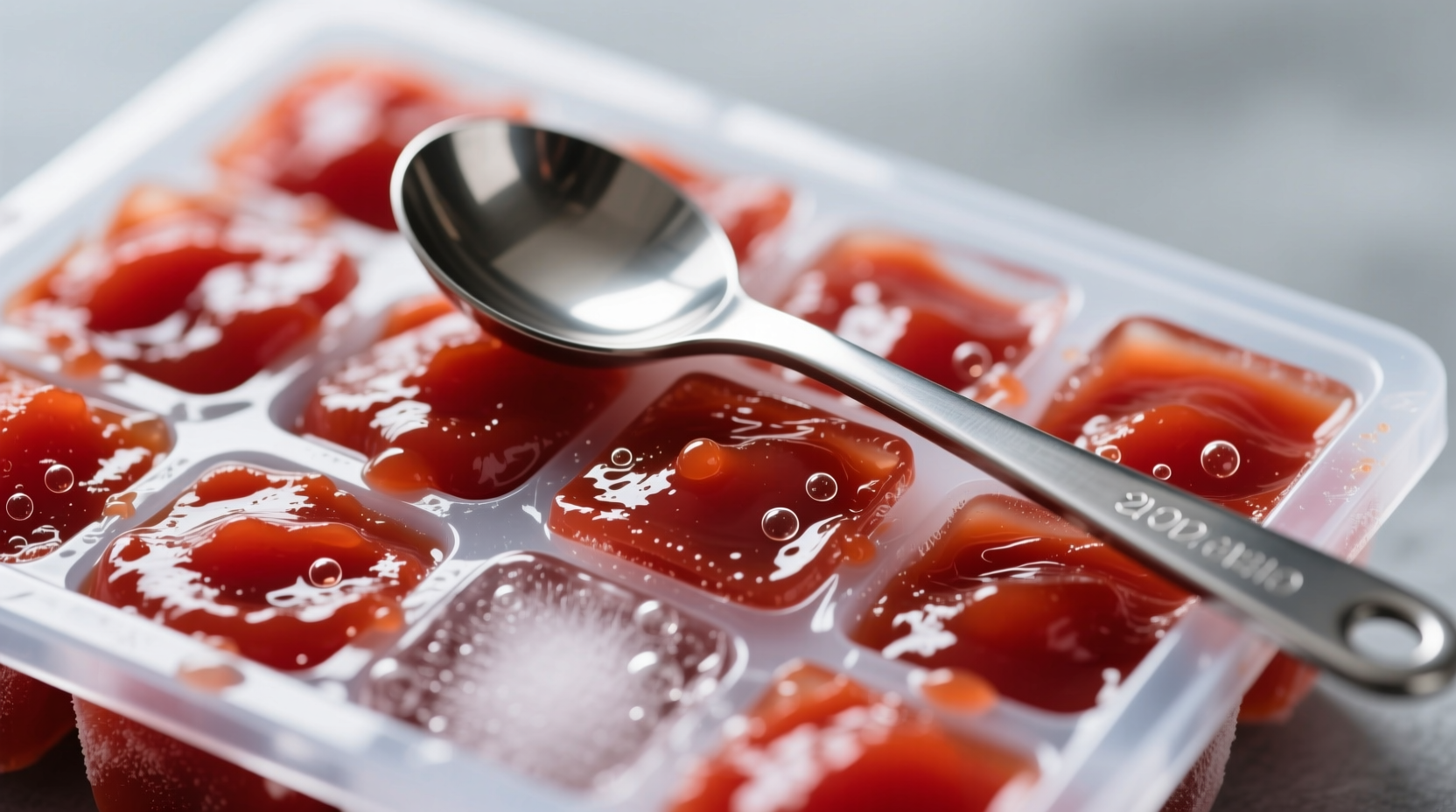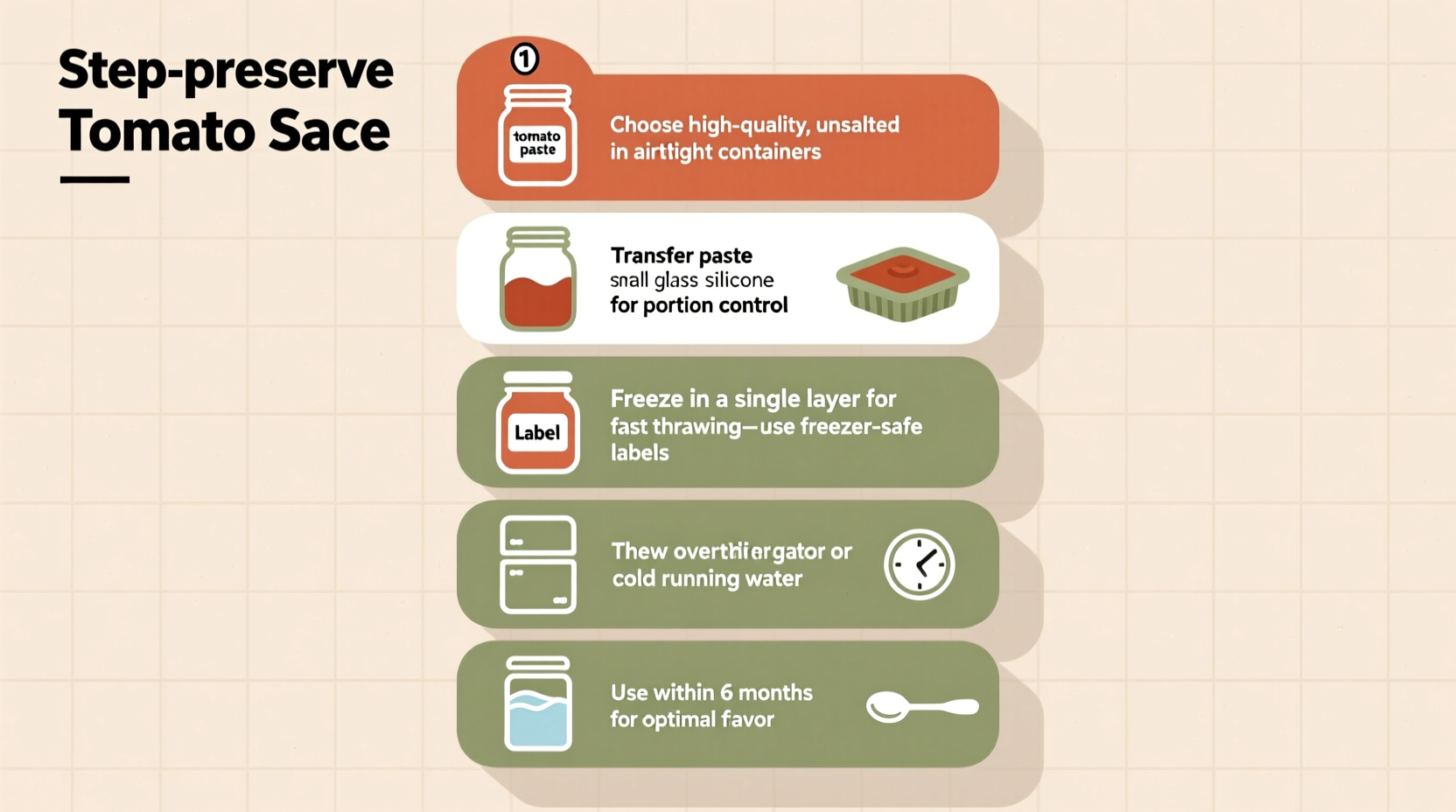Every home cook has faced this dilemma: you need just two tablespoons of tomato paste for a recipe, but the can contains eight ounces. The remaining paste oxidizes in the refrigerator within days, forcing you to throw away perfectly good ingredients. This common kitchen frustration represents significant food waste and unnecessary grocery expenses.
Why Proper Tomato Paste Preservation Matters
According to the USDA's National Center for Home Food Preservation, improper storage of acidic foods like tomato products can lead to both quality degradation and potential safety issues. While tomato paste has natural acidity (pH around 4.3), exposure to air accelerates spoilage through oxidation and microbial growth.
FoodSafety.gov recommends maintaining proper storage temperatures below 40°F (4°C) for refrigerated items and 0°F (-18°C) for frozen foods. When preserved correctly, tomato paste retains its rich umami flavor and thick consistency, ensuring your future recipes maintain their intended taste profile.
Four Proven Tomato Paste Preservation Methods Compared
| Method | Shelf Life | Flavor Retention | Best For |
|---|---|---|---|
| Freezing (portioned) | 6 months | Excellent | Most home cooks |
| Canning (pressure) | 12-18 months | Very Good | Large batches, pantry storage |
| Drying | 3-6 months | Good | Soups, stews |
| Oil covering | 1 month refrigerated | Fair | Short-term use only |
Step-by-Step Freezing Method (Most Recommended)
Freezing provides the best balance of convenience, flavor preservation, and safety for home cooks. Follow these professional chef-tested steps:
- Portion Control: Spoon leftover tomato paste into clean ice cube trays (each cube holds approximately 1 tablespoon)
- Initial Freeze: Place trays in freezer for 2-3 hours until completely solid
- Transfer to Containers: Remove frozen cubes and store in labeled airtight containers or freezer bags
- Air Removal: Press out excess air from bags to prevent freezer burn
- Labeling: Note the date and quantity (e.g., "8 cubes = 1/2 cup")

Alternative Preservation Techniques
Pressure Canning for Long-Term Storage
For those preserving large quantities, the USDA Complete Guide to Home Canning recommends pressure canning for tomato paste. This method requires:
- Headspace of 1 inch in jars
- Processing at 10 pounds pressure for 25 minutes (pints) or 30 minutes (quarts)
- Storage in a cool, dark place below 70°F (21°C)
Important safety note: Never use water bath canning for tomato paste alone, as its density requires pressure canning to reach safe internal temperatures.
Drying Technique for Concentrated Flavor
Drying creates a paste concentrate ideal for soups and stews:
- Spread paste thinly (1/8 inch) on parchment-lined baking sheet
- Dry at lowest oven temperature (140-170°F) with door slightly ajar
- Check every 30 minutes until brittle (2-4 hours)
- Store in airtight container with oxygen absorber
Troubleshooting Common Preservation Issues
Problem: Frozen paste develops ice crystals
Solution: Ensure containers are completely airtight. Vacuum sealing provides optimal protection against freezer burn.
Problem: Canned paste shows discoloration
Solution: This indicates oxidation from improper sealing. Always follow current USDA guidelines for headspace and processing times.
Problem: Dried paste becomes moldy
Solution: Incomplete drying allows moisture retention. Test dryness by breaking a piece - it should snap cleanly without bending.
Maximizing Shelf Life: Pro Tips
- Use glass containers for freezing to prevent flavor absorption
- Add lemon juice (1 tbsp per cup) to boost acidity for safer canning
- Store frozen portions in recipe-sized quantities (e.g., 4 cubes for pasta sauce)
- Always date containers using the "freeze by" system (current date + 6 months)
According to Cornell University's Food Science Department, properly frozen tomato paste maintains 95% of its original flavor compounds when stored below 0°F (-18°C). The key to successful preservation lies in minimizing air exposure and maintaining consistent temperatures.
Frequently Asked Questions
How long does frozen tomato paste last?
Properly frozen tomato paste maintains quality for 6 months at 0°F (-18°C). While technically safe indefinitely, flavor and texture begin deteriorating after this point. Always label containers with dates to track freshness.
Can I preserve tomato paste in the refrigerator?
Refrigeration alone extends tomato paste life to only 5-7 days. For longer storage, transfer leftovers to an airtight container with a thin layer of olive oil on top, but even this method shouldn't exceed 10 days due to potential botulism risk in low-acid environments.
Why can't I use water bath canning for tomato paste?
Tomato paste's dense consistency prevents proper heat penetration during water bath canning, creating potential safety hazards. The USDA requires pressure canning at specific times and pressures to ensure the center of the dense paste reaches temperatures sufficient to destroy harmful microorganisms.
How do I use preserved tomato paste in recipes?
Frozen cubes can go directly into hot dishes without thawing. For baking or cold applications, thaw overnight in the refrigerator. Dried paste should be reconstituted with equal parts warm water. Always taste before using, as preservation can slightly concentrate flavors.











 浙公网安备
33010002000092号
浙公网安备
33010002000092号 浙B2-20120091-4
浙B2-20120091-4